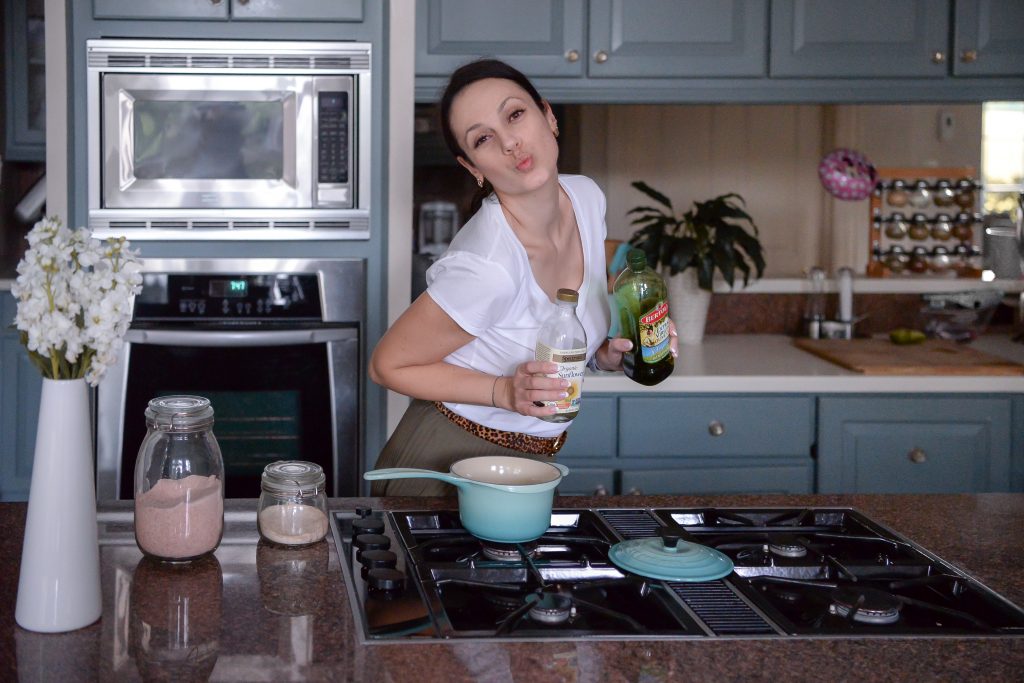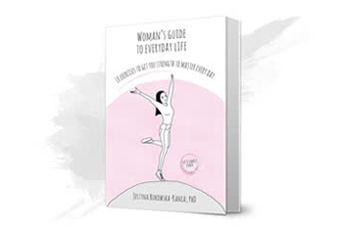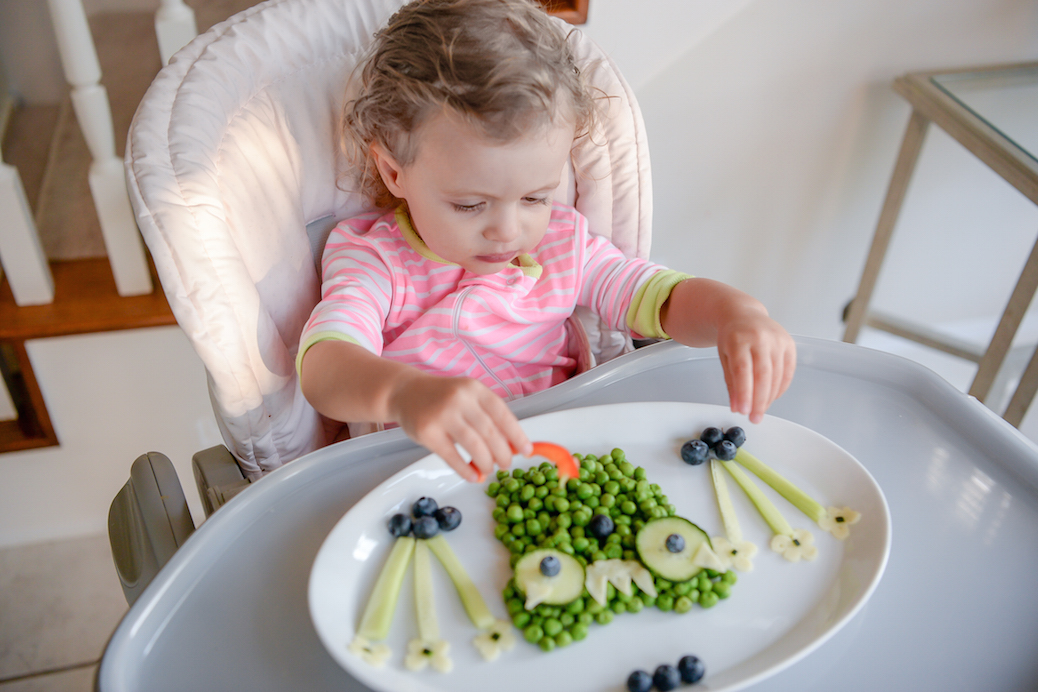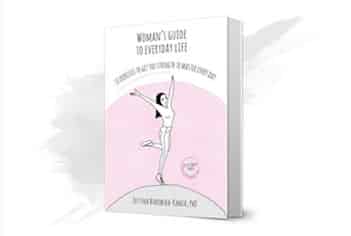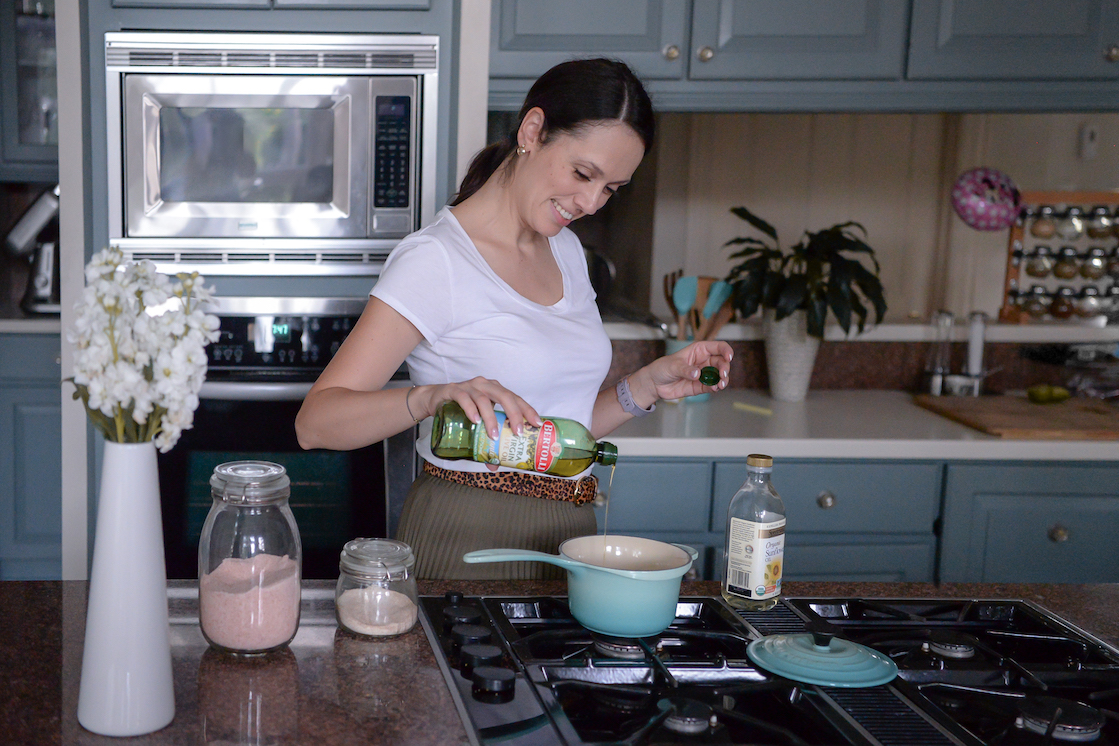
I’ve heard different, sometimes even conflicting opinions, about the role of fats, both in children’s and adults’ diet. Nevertheless, they are essential for healthy growth of every baby. According to WHO at 6 months of age breast milk or baby formula milk can be complemented with variety of food, including fats. The question is what type of fat is best for your child? What fat can be used for frying? And what can be only used cold? I hope you’ll find all your answers below.
FATS AND FATTY ACIDS
Fats play an important role in building cells, especially nerve tissues. They support the development of the brain, regulate hormones and have anti-inflammatory and even anticancer effects. The easiest way to provide an infant with fat is to add it to the meal in the form of oils. Therefore, I will focus on such oils in this article. The fat intake for a 6-12 months old infant is 31-43 grams and 33-39 grams for a child between 1-3 years old. Children need more fat than adults (per body weight), although it is still not a lot. In comparison, a spoon of oil or olive oil contains 12-15 grams of fat, and a spoon of butter — 5 grams. We can differentiate animal fats like butter or lard and plant-based fats in form of oil. The fats consist of saturated and unsaturated fatty acids. We can distinguish monounsaturated (Omega-7, Omega-9) and polyunsaturated (Omega-3, Omega-6) fatty acids. But which of them are the healthiest? On the one hand, you should provide your baby with Omega-3 and Omega-6 fatty acids in 1:2 or 1:3 ratios. On the other hand, saturated fatty acids were considered to have a bad influence on our health, although the latest research doesn’t confirm that. What is the conclusion? Every fat is different, but the best and healthiest are cold-pressed raw oils, without any preservatives or dyes. If you are looking for healthy frying oil you should remember that kids up to 3 years old should avoid fried dishes in their diet. Older kids can eat fried food not more than twice a week.
THE VITAMIN SOURCE
Fats are not only phenomenal Omega fatty acids suppliers, but they are also very rich in vitamins, especially E and A. Vitamin E is responsible for our fertility. It is also a strong antioxidant that protects us from cancer. The deficiency of vitamin E results in fatigue, anemia, frequent infections, and damage in nervous system, muscle degeneration and dental problems. Vitamin A has an influence on our sight and immunity. It is responsible for cell differentiation as well as teeth and bones growth. It makes the vitamin A essential to children’s growth.
Let’s take a closer look to different fats. I hope it’s going to help you choose the best ones for you and your child.
FATS IN CHILDREN’S DIET
OLIVE OIL
Olive oil is a source of valuable fats, especially unsaturated fatty acids. Always remember to check the label before purchasing a bottle, because not every olive oil is good. You should look for extra-virgin, high-quality, unrefined olive oil, without any extra additives. Always avoid pomace olive oil, as the hexane is used to dissolve the oil. It is definitely not suitable for children. Add extra-virgin olive oil to children’s soup, dressing and cold dishes. Olive oil is rich in vitamin A, E, D, K. It levels out sugar in blood and helps with constipation and stomach ulcers. It has a positive impact on bone growth. I usually add olive oil to salads, and I never use it for frying. The smoke point of olive oil is 200°C, so we always eat it raw. It is not suitable for deep-frying, e.g. meat. You can find information that olive oil can be used for stir-fry or as a cooking additive. To make sure that during cooking or frying the temperature won’t ascend and olive oil won’t release carcinogenic compounds, pour into a pot a spoon of olive oil, next add a spoon of water, and then start cooking.
RAPESEED OIL
Although many oils have become very popular recently, I think rapeseed oil is still underestimated. It contains a lot of alpha-linolenic acids (ALA), which build Omega-3. You should choose nonerucic rapeseed oil, though it is hard to find. Instead, you can use a low erucic type, which contains at most 5% of erucic acid, so check out the label before the purchase. The rapeseed oil is recommended to pregnant women. You can add it to your infant diet as soon as he or she turns 6 months old. The deficiency of Omega-3 in first 18 months after birth can lead to irreparable changes in nervous system and rapeseed oil is perfect to supplement it. Rapeseed oil enables the brain development, and helps preventing cancer and type II diabetes. The smoking point is about 170°C / 340°F, so it’s best used raw.
LINSEED OIL
A linseed oil is valuable oil because it contains 45-60% of Omega-3 fatty acids that contribute to the development of brain, retina, and nervous system. It can be introduced into infant diet from the age of 6 months. Linseed oil has to be used raw, because it contains many polyunsaturated fatty acids. It also becomes rancid quickly, while stored outside the fridge. Linseed oil is necessary for children at school age, as a lot of Omega-3 is crucial for neurons growth. Omega-3 also prevents and supports treatment of ADHD. The cold-pressed, raw oil has to be kept away from light, below room temperature, so you probably won’t find it in the local market. Check healthy food stores and look for dark bottles of oil, kept in the fridge. 2-3 spoons of oil daily should provide the right amount of fats for preschoolers. I started at 1 tablespoon every day, when my girls turned 6 months old and I increased the dose over time.
AVOCADO OIL
Avocado oil is an interesting alternative for olive oil. It has a nutty or butter-almond flavor, which adds depth of taste to your meal. Although the ratio of Omega-6 to Omega-3 (13:1) doesn’t make it the best choice as Omega-3 supplement, it is rich in Omega-9 fatty acids, that help the organism to fight bacterial infections and protects us from immune system diseases. Moreover, it contains a lot of vitamins A, E, B and lutein that benefits our sight. Because the smoking point is high, you can use refined avocado oil for baking and frying. Use the unrefined oilraw and add it to salads, dipping, sauces, vegetables and pasta. You can always use it with bread instead of butter. Avocado oil is not essential in children’s diet. I started to give my daughters raw avocados with other fruits and vegetables in salads, smoothies or on its own.
SUNFLOWER OIL
As far as I remember sunflower oil was used for frying. Unfortunately its smoking point is low, only 100°C / 212°F, and as it starts to burn it creates harmful substances. When used raw, it can be given even to infants. It doesn’t contain a lot of Omega-3, but just one spoon is enough to cover the daily requirement for Omega-6. The excess of Omega-6 escalate the inflammations, so I recommend replacing it with rapeseed or linseed oil on every day basis.
COCONUT OIL
Coconut oil is very well-known for its applications in the kitchen and as a beauty care product. To be honest, I always keep a jar or two in my larder. You can read about how I use it in this article. I replaced all other oils with coconut oil long time ago and I use it for frying dishes. Coconut oil contains saturated fats; therefore there is much misleading information, that it cannot be used for frying. Instead, coconut oil works anti-inflammatory. A very high smoking point makes it ideal for frying. You can add it to spelt semolina pudding, cereals or yogurt cocktails. And don’t ever forget that it is one of the best beauty products in the world. Check my recipe for a homemade balm. If your baby suffers from cradle cap put a little of coconut oil on his/her head and gently brush it with soft toothbrush. The results are awesome.
BUTTER
Butter is one of the most controversial sources of fats on my list. Some consider it as a necessity in child’s diet, whereas others claim it should be eliminated. As there are many oils to choose from, butter is still one of the alternatives that we like to use. If your child is not allergic to cow milk, you can add it to its diet. Butter is a great source of vitamins A, D, E and K2, and vitamin K2 helps our body to assimilate vitamins A and D. The latest research proves that there is no link between saturated fats in high-quality butter and heart diseases. Moreover, the butter contains 3-4% of butyric acid, which restrains the division of cancer cells and accelerates the death of damaged cells. The linoleic acid CLA prevents atherosclerosis and even reduces the fat in our body, hence our weight. The most recognized clinical research in the history of modern medicine in Framingham proved that margarine can cause heart diseases, but butter decrease the high blood pressure.
You can safely add butter to a family diet, but always check out the label for ingredients. High-quality butter contains at least 80% of animal fat, 16% of water and its basic ingredient is cow milk. Our family chose ecological butter made from milk that comes from cows only eating grass. It tastes delicious and is very healthy for all of us. Use it raw, because it shouldn’t be fried or baked. The smoking point is just 170°C / 340°F, but if you can’t live without the butter flavor in fried and baked dishes I have an idea for you just below.
CLARIFIED BUTTER
Clarified butter is made by slowly melting on low heat and allowing the components to separate. The result? One of the healthiest fats we can get. Buy it or check one of my previous posts and DIY in 30 minutes. Clarified butter is perfect for everyone and ricotta summer pancakes with clarified butter by my recipe is just delicious!
LARD
Lard is one of the healthiest fats for humans. The chemical transformation doesn’t occur while heating. It is not oxidizing like plant oils do and it doesn’t create free radicals or cancerogenic compounds. It doesn’t become rancid and has a very high smoking point, so you can use it for frying and it contains a very good ratio of Omega-3 and 6. If lard is made from an animal that grazed in the sun on grassland, then it will contain a lot of vitamin D (1 spoon = 1000IU). If possible buy fat from a trusted farmer and make the lard on your own like I do it. I melt the fat on low heat for 16 h. Though children younger than 3 years old shouldn’t eat fried dishes, you can enjoy the taste and all the benefits that come with it.
Summarizing… For frying, I use coconut oil, clarified butter or lard. I add interchangeably rapeseed oil, linseed oil and sometimes sunflower oil into my kids’ mixed soups, semolina and cereals. I use extra virgin olive oil for salads and coconut oil for smoothies that appear frequently on our weekly menu. We all love homemade bread (here’s the recipe) with ecological butter.
Well balanced fats in our diet support our immune and circulatory system, enable brain functions and transport vitamins crucial for the growth of our organism. You shouldn’t avoid them in your diet. Instead, select the best fats for your needs and add them to everyday menu. A child’s diet should be varied with fats, and there are many to choose from. I hope this post helps you to better understand fats and helps choosing the healthiest ones for your little munchkins and the whole family.
